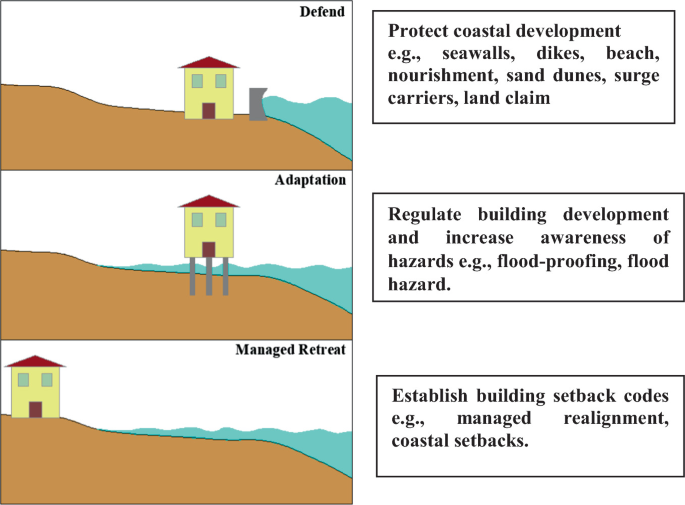Not known Facts About Shore Protect Team
Wiki Article
The Ultimate Guide To Shore Protect Team
Table of ContentsThe Ultimate Guide To Shore Protect TeamNot known Details About Shore Protect Team 3 Easy Facts About Shore Protect Team ExplainedShore Protect Team Can Be Fun For AnyoneThe smart Trick of Shore Protect Team That Nobody is Talking AboutRumored Buzz on Shore Protect TeamHow Shore Protect Team can Save You Time, Stress, and Money.
Decrease in home worth: As the location tourism is influenced by erosion, so after that is the economic situation. Customers are less most likely to look for a coastline house that can be destroyed at any moment by the impending flooding and erosion emergency. Consequently, building value can drop tremendously and impact the entire region.Whether a beach is just tiny and congested or needs to close totally for the security of the ecological community and close-by residential properties, this significantly affects tourism. Consequently, local economies are affected (http://www.askmap.net/location/7566985/united-states/shore-protect-team). Risk of injury: The boosted danger of flooding and structural failings creates a boosted risk of injury to nearby vacationers and neighborhood members

Shoreline stablizing is directly associated to their job. Waterside hotels: Because coastline disintegration impacts tourism, it impacts the success of waterside resorts.
3 Easy Facts About Shore Protect Team Explained
This eventually results in closures and abandoned beachfront residential or commercial properties. Coastal commercial companies: No tourists suggests no business. For those organizations dealing with residents, their residential property is at threat of damage from disintegration and flooding. Coastal state parks: State parks that exist along coastlines are at threat of damage. Not only to the manufactured structures and residential or commercial properties on website, but additionally to the all-natural communities that exist within.Difficult stablizing utilizes manufactured structures as protection to manage erosion. A lot of types of tough stabilization like seawalls and sheet metal are not optimal for coastline stablizing.
The Greatest Guide To Shore Protect Team
There's also inadequate evidence of their performance depending upon the kind of shoreline and neighborhood conditions. Difficult stablizing strategies often tend to be a lot more tough to mount and don't match the natural visual, protruding like a sore thumb and damaging regional communities in many situations. Coastline nourishment is the procedure of adding lost sand and debris back to coastlines after erosion has occurred.TrapBags aid in the process of coastline nutrients by safeguarding natural ecosystems and enabling plants to expand. While this procedure can be expensive and is not long-term, the pros tend to surpass the disadvantages. TrapBag obstacles deal numerous residential properties that make them optimal for coastal and shore disintegration defense. They're: Ecologically pleasant: You can use native dirt both to surround and to fill the TrapBags.

The Basic Principles Of Shore Protect Team
Easy to set up: Reduce of installment suggests TrapBags can be released swiftly in the occasion of an emergency. They can additionally be installed with no hefty equipment. Budget-friendly: TrapBags are perfect for both small and large areas of coastline. They offer a budget friendly remedy to cover projects of any dimension.Integrated with a high construction price, this has led to increasing use various other soft engineering seaside administration options such as coastline replenishment. Seawalls are constructed from different products, most generally reinforced concrete, stones, steel, or gabions. Other possible building and construction materials include vinyl, wood, aluminum, fiberglass composite, and biodegradable sandbags constructed from jute and coir. The suitable seawall style counts on location-specific aspects, including bordering disintegration procedures. There are three primary kinds of seawalls: upright, rounded, tipped, and piles (see table listed below).
All-natural obstacles, such as reef and mangrove woodlands, prevent the spread of tidal waves and the circulation of coastal waters and mitigated the flooding and rise of water. A cost-benefit approach is an effective way to determine whether a seawall is ideal and whether the benefits are worth the expense.
All About Shore Protect Team
A seawall is a static attribute which can conflict with the vibrant nature of the coast and restrain the exchange of debris in between land and sea. The table below sums up some positive and adverse results of seawalls which can be used when contrasting their performance with other seaside management alternatives, such as beach nourishment. [] Benefits and drawbacks of seawalls according to Short (1999) Benefits Drawbacks Long-term option in contrast to soft beach nutrients.
This can trigger coastlines to dissipate, making them pointless for coastline goers. Generally, seawalls can be a successful means to control seaside erosion, yet just if they are created well and out of materials that can hold up against the force of recurring wave energy.
More About Shore Protect Team
The appropriate seawall layout relies on location-specific aspects, consisting of surrounding erosion processes. There are three major types of seawalls: upright, rounded, stepped, and mounds (see table below). A report published by the United Nations Setting Programme (UNEP) suggests that the tsunami of 26 December 2004 created less damage in the areas where all-natural obstacles existed, such as mangroves, reef or coastal vegetation.Natural obstacles, such as reef and mangrove forests, prevent the spread of tsunamis and the flow of coastal waters and minimized the flood and surge of water. A cost-benefit strategy is an effective means to determine whether a seawall is appropriate and whether the advantages deserve the expenditure.
Not known Factual Statements About Shore Protect Team
A seawall is a static attribute which can clash with the vibrant nature of the coastline and impede the exchange of debris in between land and sea. Benefits and downsides of seawalls according to Short (1999) Advantages Disadvantages Lengthy term option in contrast to soft beach nutrition.
This can cause coastlines to dissipate, rendering them useless for coastline goers. Generally, seawalls can be a successful method to regulate seaside erosion, but just if they are created well and out of products that can withstand the force of continuous wave power.
Report this wiki page